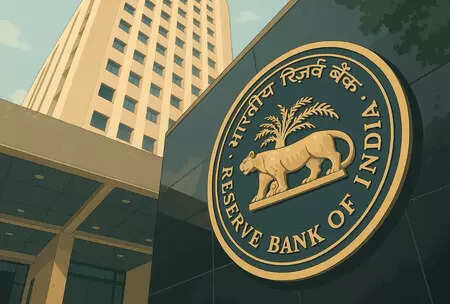India is set to increase its presence in the United States market. This is due to changes in Washington’s tariff policies. Niti Aayog reports India will gain competitiveness in many product categories. The US has higher import tariffs on countries like China and Mexico. This creates an opportunity for Indian exporters. India’s merchandise exports and services exports are also growing.
Shifting Tides: How US Tariff Changes Could Favor Indian Exports
For years, global trade has been a complex dance of tariffs, regulations, and shifting alliances. But the latest moves in the US tariff landscape may be setting the stage for a significant boost to Indian exports. A recent analysis reveals that India is poised to capitalize on these changes, gaining a competitive edge across a surprisingly wide range of product lines.
The world economy hasn’t been the same since the 2020 pandemic, but Indian business owners are showing resilience. What is it that makes this possible?
A Century of Opportunity for Exporting? Examining Product Lines
The report highlights over 100 specific product lines where India stands to gain. This isn’t just about a few isolated sectors; it’s a broad-based opportunity spanning diverse industries. We’re talking about everything from textiles and apparel to certain chemicals and engineering goods. The key here is that the reshaping of US trade policy, particularly the adjustments in tariffs on goods from other countries, creates a more level playing field – or even tips the scales slightly in India’s favor.
Imagine a scenario where a US company previously sourced components from a country facing high tariffs. Suddenly, Indian suppliers, facing lower or no tariffs on the same goods, become significantly more attractive. This isn’t just about price; it’s about reliability, quality, and the ability to maintain consistent supply chains – all areas where Indian manufacturers have been making significant strides.
It is easy to see how a small boost in demand can turn into big wins.
Beyond Goods: The Power of Services and Tech
While the focus on product lines is important, it’s crucial to recognize that India’s export story is far more nuanced. The analysis also emphasizes the growing importance of services and technology in driving India’s economic resilience. The third quarter saw particularly strong performance in these sectors, proving that India’s export capability isn’t solely dependent on traditional manufacturing.
India’s burgeoning tech sector, fueled by a young, highly skilled workforce, is increasingly competitive on a global scale. From software development and IT services to cutting-edge research and development, Indian companies are making their mark. Similarly, the services sector, encompassing everything from business process outsourcing (BPO) to tourism, continues to be a significant contributor to export revenue.

This diversification is key to long-term sustainability. By excelling in both goods and services, India is building a more robust and resilient export economy, less vulnerable to fluctuations in any single sector or market.
The Q3 Resilience Factor
Speaking of resilience, the performance in the third quarter is particularly noteworthy. Amidst global economic uncertainty, India’s exports demonstrated a remarkable ability to weather the storm. This resilience can be attributed to several factors, including:
* Diversification: As mentioned earlier, a diversified export portfolio reduces reliance on any single product or market.
* Government Support: Initiatives aimed at promoting exports, such as streamlining regulations and providing financial incentives, have played a crucial role.
* Adaptability: Indian businesses have shown a remarkable ability to adapt to changing market conditions, quickly responding to new opportunities and challenges.
* Strong Domestic Demand: A healthy domestic market provides a buffer against external shocks, allowing businesses to maintain production and employment even when export demand weakens.
Navigating the Future of Indian Exports
While the current outlook is positive, it’s important to acknowledge that the global trade landscape remains dynamic and unpredictable. Continued success will depend on India’s ability to:
* Maintain competitiveness: Investing in infrastructure, skills development, and technological innovation is crucial to staying ahead of the curve.
* Diversify markets: While the US is an important market, exploring new opportunities in other regions, such as Asia and Africa, will be essential for long-term growth.
* Address trade barriers: Working to reduce tariffs and other trade barriers in key markets will further enhance India’s export competitiveness. The government can make policies that focus on exports.
* Promote sustainable practices: Consumers are increasingly demanding sustainable products and services. Indian businesses need to adopt eco-friendly practices to remain competitive in the global market.
See how some Indian businesses can grow and expand to new markets, and maybe consider starting your own journey!
The potential boost from shifting US tariffs represents a significant opportunity for Indian exporters. By capitalizing on these changes and continuing to invest in competitiveness, diversification, and sustainability, India can solidify its position as a major player in the global trade arena. The coming years promise to be an exciting period for Indian exports, filled with both challenges and opportunities. The key lies in strategic planning, adaptability, and a relentless pursuit of excellence. The stage is set.







